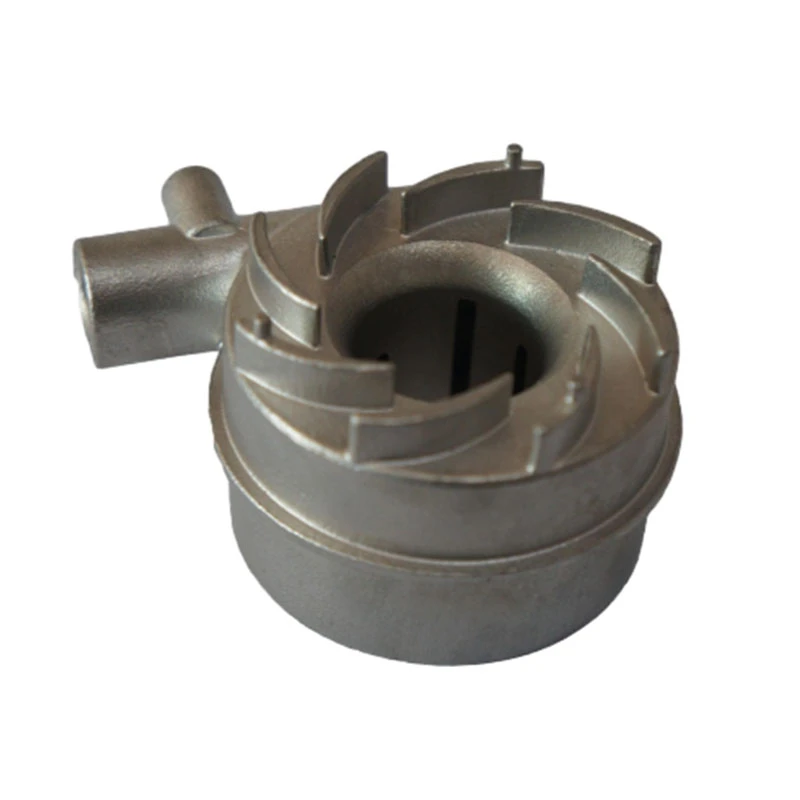aluminum die casting products
Aluminum Die Casting Products An Overview
Aluminum die casting has become a crucial process in modern manufacturing, known for its ability to produce high-quality and complex components in various industries. This process involves forcing molten aluminum into a mold cavity under high pressure, resulting in lightweight, durable, and cost-effective products. The versatility of aluminum die casting has made it a preferred choice for automotive, aerospace, electronics, and consumer goods manufacturing.
One of the primary advantages of aluminum die casting is its ability to create intricate shapes with tight tolerances. The precision of die-cast parts is unmatched, allowing manufacturers to achieve complex geometries that would be difficult or impossible to create with other methods. This precision reduces the need for further machining, thereby optimizing production times and minimizing waste. The smooth surface finishes associated with aluminum die casting also enhance the aesthetic appeal of the final product, making it suitable for applications where appearance matters.
Aluminum itself is a remarkable material that offers several benefits. It is lightweight compared to other metals, which contributes to fuel efficiency in vehicles and reduces the overall weight of products. Additionally, aluminum is highly resistant to corrosion, which enhances the longevity and reliability of die-cast components. This resistance is particularly advantageous in automotive and aerospace applications, where exposure to harsh environments can lead to significant wear and tear.
The aluminum die casting process can be categorized into two main types hot chamber and cold chamber die casting. Hot chamber die casting is suitable for alloys with low melting points and is typically used for smaller, less complex parts that require high production rates. In contrast, cold chamber die casting is employed for high-temperature alloys and larger parts, offering greater flexibility in terms of component size and complexity. Each method has its own set of benefits and is chosen based on the specific requirements of the production run.
aluminum die casting products

Another significant aspect of aluminum die casting is its environmental impact. Aluminum is one of the most recycled metals in the world. The recycling process requires only a fraction of the energy needed to produce new aluminum, making it an eco-friendly choice. Manufacturers are increasingly using recycled aluminum in die casting, which not only reduces waste but also minimizes the carbon footprint associated with production.
The automotive industry has greatly benefited from aluminum die casting, with the material being used for components such as engine blocks, transmission housings, and structural parts. The lightweight nature of aluminum helps to improve fuel efficiency and reduce emissions, aligning with the industry's push towards greener technologies. Similarly, in the aerospace sector, die-cast aluminum parts are utilized for their strength-to-weight ratio, which is critical for aircraft performance and fuel economy.
In the electronics industry, aluminum die casting is employed to produce housings for LED lighting fixtures, circuit breakers, and various components that require thermal management
. The material’s excellent thermal conductivity aids in dissipating heat, ensuring the efficiency and longevity of electronic devices.In conclusion, aluminum die casting products play a vital role in various sectors, delivering a combination of quality, durability, and efficiency. As technology advances and the demand for lightweight, high-performance components grows, the aluminum die casting process will continue to evolve, offering even more innovative solutions. The ongoing focus on sustainability and recycling also positions aluminum as a key material for the future, ensuring its relevance in a rapidly changing manufacturing landscape.
-
Aluminium Pressure Die Casting High-Precision & Durable Solutions for Complex PartsNewsJul.08,2025
-
Top Aluminum Sand Castings Manufacturer – Precision Green Sand Castings for Industrial NeedsNewsJul.08,2025
-
Precision Lost Wax Casting Quotes – High Accuracy Custom Parts Lost Wax Precision Casting ServicesNewsJul.07,2025
-
High-Quality Sand Used for Casting - Superior Sand for Sand Casting ProcessesNewsJul.07,2025
-
China Supply High End Metal Stamping Parts Sino - Precision Manufacturing FactoryNewsJul.06,2025
-
High-Quality Automotive Investment Casting Services Precision & Sand Casting SolutionsNewsJul.06,2025















